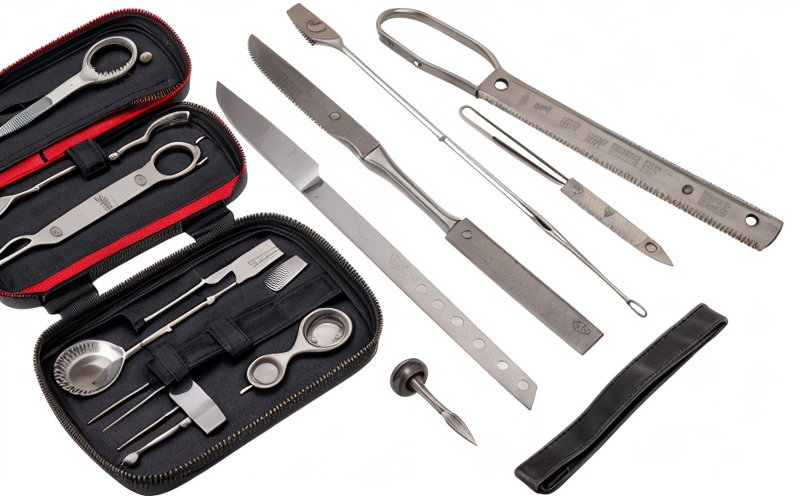ISTA Distribution Simulation Testing of Packaged Surgical Instruments
The ISTA distribution simulation testing process is a critical component in ensuring that medical devices and surgical instruments are designed to withstand the rigors of real-world logistics. This service focuses on testing packaged surgical instruments according to the ISTA standards, which have been widely adopted for their robustness in simulating distribution environments.
The ISTA methodology is based on a series of test protocols that replicate various aspects of transportation and storage conditions. For surgical instruments specifically, this includes exposure to temperature fluctuations, humidity variations, vibration, and impact forces. These tests are designed to identify potential issues early in the product development lifecycle or during compliance verification.
During ISTA testing, packaged surgical instruments undergo a series of mechanical stresses that mimic typical distribution scenarios. This includes drop tests from varying heights onto surfaces like concrete or steel, as well as exposure to temperature cycling and humidity levels found in different regions worldwide. The goal is to ensure that the packaging not only protects the instrument during transit but also maintains sterility until it reaches its destination.
The testing process begins with careful selection of test parameters based on the specific requirements of each surgical tool or set of tools. This involves determining appropriate drop heights, vibration frequencies, and temperature ranges that accurately represent real-world conditions encountered by medical devices in transportation. Specimen preparation is crucial; sterile wrapping must be maintained throughout all stages of testing.
Once the tests are completed, detailed reports are generated summarizing results from each phase of the simulation. Reports include observations about any damage sustained during testing as well as recommendations for improving packaging design if necessary. Compliance with relevant international standards such as ISO 14971:2016 on medical device risk management is ensured.
By incorporating ISTA distribution simulation testing into their quality assurance programs, manufacturers can significantly reduce risks associated with improper handling of surgical instruments during shipping and storage processes. This not only enhances patient safety but also supports overall compliance requirements set forth by regulatory bodies like the FDA or EU Medical Device Regulation (MDR).
In summary, ISTA distribution simulation testing plays a vital role in safeguarding both product integrity and user confidence when it comes to surgical instruments used in healthcare settings.
Applied Standards
The application of ISTA standards in surgical instrument packaging is crucial for ensuring that these products meet stringent quality expectations throughout their lifecycle. These tests are based on internationally recognized guidelines, including those provided by ISO 14971, which emphasizes the importance of risk management in medical device design and production.
ISTA-6 is particularly relevant for this type of testing as it provides specific criteria for simulating distribution conditions. This includes drop tests from heights ranging between one to three meters onto hard surfaces like concrete or steel, which effectively mimic rough handling during transport. Additionally, temperature cycling and humidity exposure are key components that help assess how well the packaging performs under adverse environmental conditions.
For surgical instruments specifically, ISTA-17 focuses on pallet loading and unloading simulations, providing insight into potential impacts faced by packaged units during warehousing operations. Compliance with these standards ensures that manufacturers adhere to best practices in protecting valuable assets while minimizing risk exposure.
The use of such standardized methods allows for consistent evaluation across different manufacturers and suppliers, thereby fostering trust among all parties involved in the supply chain. It also facilitates easier compliance with local regulations governing medical device transportation and storage.
Industry Applications
In the healthcare sector, where precision and reliability are paramount, ISTA distribution simulation testing of packaged surgical instruments offers significant value by ensuring that these critical tools remain functional and safe throughout their journey from manufacturer to end-user. Hospitals, clinics, and surgery centers rely heavily on proper packaging practices to maintain sterility and integrity during transit.
For instance, in environments where surgeries are conducted multiple times per day, any disruption caused by damaged or compromised instruments could have serious consequences for patients' health outcomes. By adhering to ISTA standards, healthcare providers can be confident that they are receiving products designed to meet high safety standards at every stage of delivery.
The benefits extend beyond just maintaining product quality; they also contribute towards reducing waste and improving resource efficiency within hospitals. Properly packaged instruments allow for easier recycling or disposal when no longer needed, aligning with broader sustainability goals in the medical industry.
Moreover, adherence to ISTA guidelines helps facilities meet regulatory requirements imposed by governing bodies like the FDA or EU Medical Device Regulation (MDR). Non-compliance can lead to costly fines and reputational damage, making it essential for organizations to invest in robust testing protocols early on.
Environmental and Sustainability Contributions
The implementation of ISTA distribution simulation testing also has positive implications for environmental sustainability. By optimizing packaging designs through rigorous testing, manufacturers can reduce material usage without compromising safety or efficacy. This leads to decreased waste generation during production processes and more efficient use of resources throughout the product lifecycle.
Additionally, minimizing shipping times and distances where possible reduces carbon footprints associated with transporting medical supplies globally. Efficient logistics planning informed by ISTA data supports greener practices within the healthcare industry as a whole.
Moreover, sustainable packaging solutions that pass ISTA tests can contribute to circular economy initiatives aimed at extending product lifecycles beyond initial use. This encourages reprocessing or repurposing of used surgical instruments rather than disposing them directly into landfills. Such approaches foster innovation in eco-friendly materials and technologies used across various sectors.
Overall, integrating ISTA distribution simulation testing into the supply chain management process demonstrates a commitment to both quality assurance and environmental responsibility – two key pillars supporting long-term success in today's competitive healthcare market.





